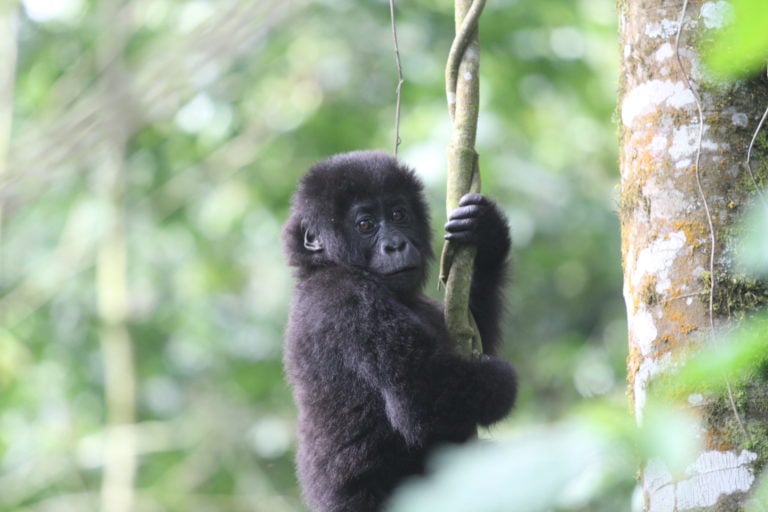Saving the critically endangered gorillas of the Congo Basin

A critically endangered Grauer’s gorilla (Dian Fossey Gorilla Fund International, 2021).
You’re probably wondering what cellphones have to do with a gorilla species endemic to the forests of the Congo Basin in Africa.
They are, however, related. It’s thanks to the production of cellphones that the Gorilla beringei graueri (Grauer’s gorilla) has become critically endangered in recent years. In part due to the mining of minerals used to produce cellphones, the species has declined in population by 80% over the past 25 years (Dian Fossey Gorilla Fund International, 2021). Mining activities in Congo are driven by the demand for “conflict metals”, which are used in the production of cellphones. These mining activities often take place outside regulatory frameworks and in protected areas such as the Kahuzi-Biega National Park. As a result, this threatens species like the Grauer’s gorilla as well as other endangered species in the region like eastern lowland gorillas.
This video, put together by the Dian Fossey Gorilla Fund International, is a call to action to raise awareness on the critically endangered species. Some zoos have actually capitalised on this, blending a promotion of better recycling practices with their conservation campaigns for the gorillas. One example is Zoos Victoria in Australia, which has started the ‘They’re Calling on You’ mobile phone recycling community campaign.

An Australian tourist on a gorilla tourism experience at Kahuzi-Biega National Park (Litchfield et al., 2018).
This illuminates how eco-tourism could be blended with mobile phone collection campaigns to raise awareness on the ecological impacts of e-waste pollution. According to Litchfield et al. (2018), ‘They’re Calling on You’ was highly successful—a total of 115,369 mobile phones were donated from 2009 to 2014. Close-up encounters as part of eco-tourism was also a big contributing factor to this, where one phone was donated for every four people attending keeper talks at Werribee Open Range Zoo and one phone for every 28 people attending keeper talks at Melbourne Zoo.
Though the situation for these gorillas have been dire, things seem to be looking up for the gorillas through such creative cross-themed conservation campaign efforts. This concludes our chapter on “Implications”, and we’ve also briefly discussed some possible solutions that could be undertaken. Next time, we’ll start on the “Solutions” chapter of this blog, and delve even deeper into the possible ways we can tackle the global e-waste challenge moving forward.
References
Dian Fossey Gorilla Fund International. (2021). Good news for Grauer’s Gorillas. Retrieved 11 March 2022, from https://gorillafund.org/gorilla-protection/good-news-for-grauers-gorillas/.
Litchfield, C. A., Lowry, R., & Dorrian, J. (2018). Recycling 115,369 mobile phones for gorilla conservation over a six-year period (2009-2014) at Zoos Victoria: A case study of ‘points of influence’ and mobile phone donations. PloS One, 13(12), e0206890-e0206890. https://doi.org/10.1371/journal.pone.0206890.



